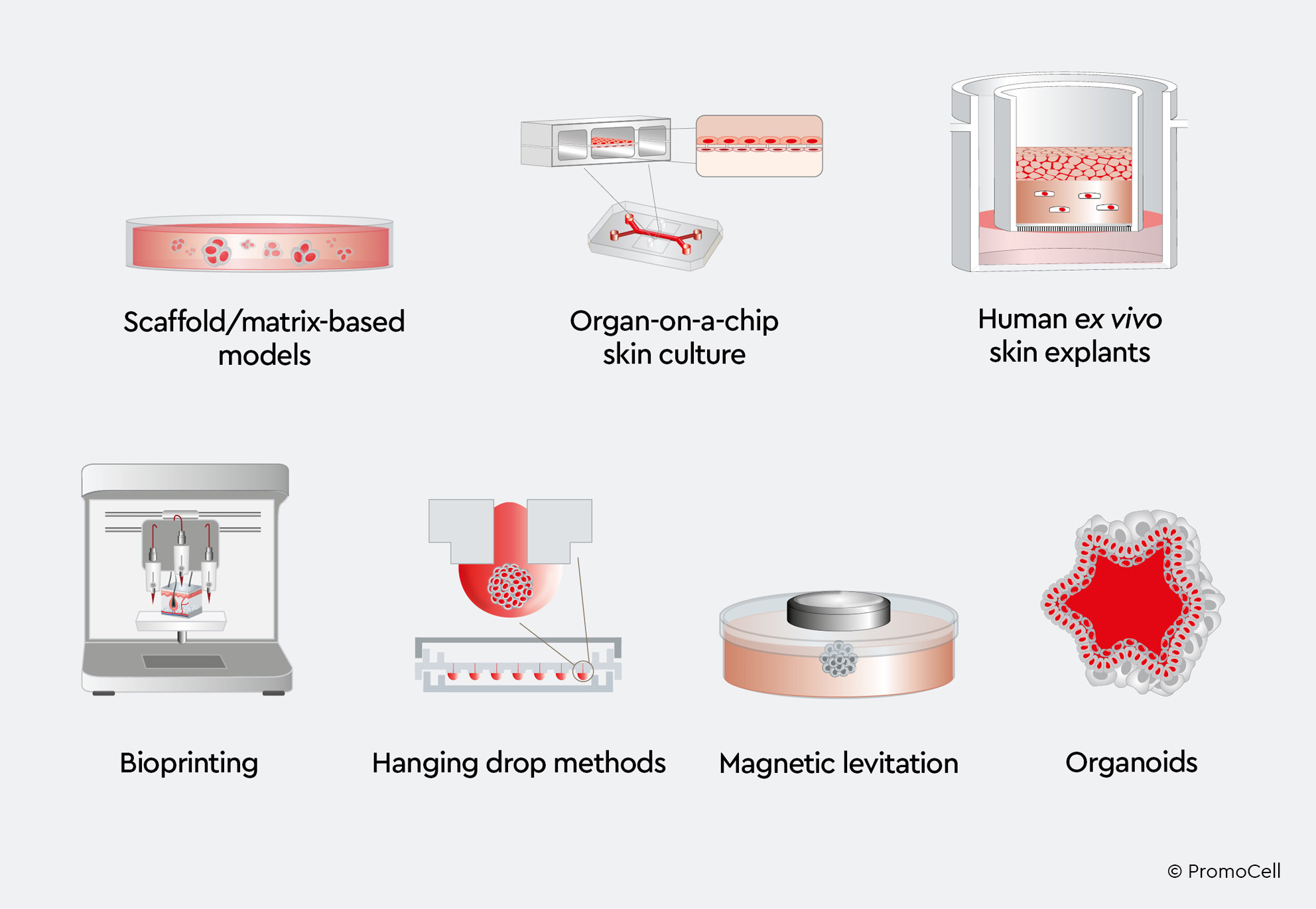PromoCell – at your side from the research lab to the regulated environment
Part of the broad portfolio of high-quality and reliable cell culture products that PromoCell offers, is their mesenchymal stem cell culture portfolio.
Discover how PromoCell’s 3D skin models revolutionize dermatology by surpassing traditional methods. Explore bioprinted skin, organoids, and organ-on-a-chip technologies for advanced skin research solutions.
Our skin – often seen as the barrier between the environment and our organism, is way more than just that! It is our largest organ, displays a complex layered structure and fulfills a plethora of functions. Whereas researchers in cosmetics and dermatology often relied on animal models in the past, the total ban of animal experiments by strict EU regulations was one of the factors driving cell culture based approaches forward.
3D skin models have brought and are bringing dermatology research to the next level!
Dive with PromoCell into emerging technologies in 3D skin modeling – they highlight related challenges, and introduce details on promising technologies, including i.a. bioprinted skin, organoids, and organ-on-a-chip approaches.
3D skin models offer several advantages over traditional 2D cultures, including a more realistic cellular environment that closely mimics the natural structure and function of human skin. They provide improved physiological relevance, enhanced predictability, and reproducibility, making them powerful tools in dermatology research. These models are also excellent for studying drug penetration and efficacy, offering a more ethical alternative to animal testing.
Despite their potential, 3D skin models face challenges such as standardization, reproducibility, and complexity. However, emerging technologies are addressing these obstacles. Promising advancements include:

Advances in bioprinting and tissue engineering are paving the way for more sophisticated and realistic 3D skin models. These technologies hold the promise of creating patient-specific models for personalized drug testing and treatments in dermatology. As the field of 3D skin modeling continues to evolve, it heralds a new era in dermatological research, offering unprecedented opportunities for understanding and treating skin diseases.
PromoCell provides a comprehensive portfolio of products that help you establish a 3D skin model. These products include:
Last but not least, you can explore how the above mentioned and other tools for dermatological research from PromoCell´s portfolio come into play in innovative solutions for 3D skin models. Spread the word on the transformative potential of 3D skin models in reshaping our understanding of skin function.
We gladly support you by keeping you updated on our latest products and the developments around our services.